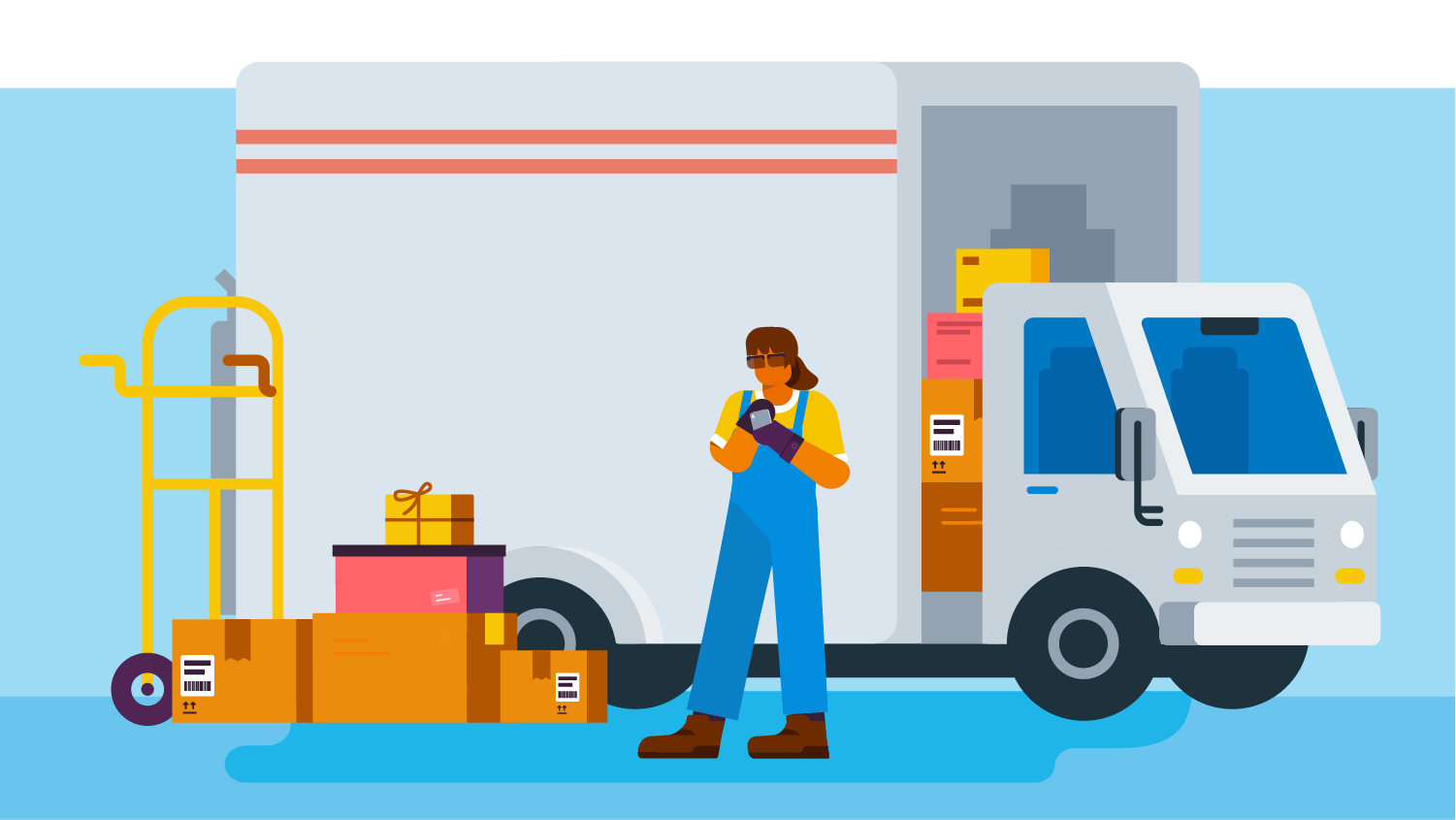Out Of State Movers: Expert Relocation Specialists Can Help Make Your Shift Smooth And Trouble-free
History and Development of Moving Solutions
The Dawn of Moving: From Muscle to Makers
Photo this: a handful of strong males hauling heavy trunks on wood carts, navigating cobblestone streets with sweat and determination. Before the modern-day moving market took shape, moving was a harsh, labor-intensive task. In ancient times, relocation typically indicated depending on large physical strength and fundamental tools. The absence of specialized services indicated households and merchants had to collaborate every information themselves, frequently risking damage or loss.
However isn't it fascinating how need fuels innovation? As cities expanded and commerce flourished, the need for effective, dependable moving options became glaringly obvious. Go into the age of horse-drawn wagons and later on, motorized vehicles, which changed how belongings traveled from one location to another.
Industrial Transformation: The Driver for Modification
The 19th century's industrial boom improved numerous facets of life, including how individuals moved. Unexpectedly, urban migration rose, and with it, the demand for professional movers escalated. No longer was moving a basic task; it developed into a specific service offering:
- Packing knowledge to secure vulnerable items
- Organized loading methods maximizing area
- Transport solutions customized to various distances
This duration marked the birth of business devoted entirely to moving, laying the groundwork for today's complex logistics and customer-centric approaches.
Technological Improvements and Their Effect
Can you imagine moving without modern-day devices? The introduction of hydraulic lifts, forklifts, and pallet jacks transformed the industry overnight. All of a sudden, movers could deal with bulky furniture and heavy devices with ease, reducing injuries and enhancing efficiency.
The integration of digital technology triggered a new wave of innovation. GPS tracking, online reservation platforms, and real-time inventory management have ended up being staples in the moving services landscape. These tools not just improve transparency however also empower clients to remain connected and informed throughout their moving journey.
Key Milestones in Moving Solutions Evolution
| Period | Development | Significance |
|---|---|---|
| Ancient Times | Manual labor and basic carts | Foundation of moving as a necessity |
| 19th Century | Horse-drawn wagons and packing services | Birth of expert moving business |
| 20th Century | Motorized trucks and mechanized equipment | Increased effectiveness and scale |
| 21st Century | Digital integration and GPS innovation | Boosted customer experience and logistics |
Reflections on the Journey
Assessing the advancement of movers, one might wonder: how did a simple act of transporting valuables end up being an advanced industry? It's a tale of durability, adjustment, and continuous improvement. From the sweat-soaked streets of old to the precision-driven operations these days, the history of moving services is as dynamic as the people who rely on them.
Next time you load a box or work with a mover, consider the layers of history embedded in every action. The journey of movers encapsulates human resourcefulness, transforming what was when a daunting job into a seamless experience.
Checking out the Spectrum of Moving Providers
When the time comes to shift your life from one address to another, the series of moving services available can seem like navigating a labyrinth. Do you need a simple loading and dumping crew, or does your move need the finesse of full packing and unpacking? Comprehending the nuances can conserve hours of aggravation and unexpected expenses.
Typical Types of Moving Providers
- Local Relocations: Designed for relocations within a city or city, these services generally run on a hourly basis, ideal for short ranges.
- Long-Distance Moves: Covering moves beyond 100 miles, these require more coordination, from logistical preparation to secure transport, often priced by weight and distance.
- Full-Service Moves: Movers deal with everything-- packaging, filling, transferring, discharging, and often even unloading. Ideal for those pressed for time or energy.
- Self-Service Relocations: You load and fill your valuables, while the company deals with transportation and dumping. A happy medium offering cost savings and some convenience.
- Specialized Moves: For vulnerable, bulky, or important products like pianos, antiques, or artwork, requiring specific equipment and know-how.
Specialist Tips to Browse Your Moving Service Choices
- Prioritize Flexibility: Pick a service that adjusts to unforeseen delays or last-minute modifications-- rigid schedules can turn a smooth relocation into a logistical nightmare.
- Examine Insurance Coverage Options: Not all moving business provide the exact same level of defense. Understanding your coverage can prevent heartache if something goes awry.
- Demand Detailed Inventories: A precise product list avoids disagreements and guarantees responsibility, especially when dealing with long-distance or specialized relocations.
- Consider Time of Year: Seasonal need can impact availability and rates. Early booking throughout off-peak seasons may approve much better service and flexibility.
- Inquire About Packaging Products: Premium boxes, bubble wrap, and cushioning can be the distinction in between a scratched treasure and a pristine arrival.
Table: Service Features Compared
| Service Type | Who Loads? | Transport Mode | Common Rates Model | Suitable For |
|---|---|---|---|---|
| Local Move | Consumer or Movers | Truck | Hourly | Brief ranges, small loads |
| Long-Distance Move | Movers | Truck or Container | Weight & & Distance | Cross-state or regional moving |
| Full-Service Move | Movers | Truck | Flat or Weight-Based | Time-sensitive, high-stress moves |
| Self-Service Move | Client | Truck or Container | Flat or Per hour | Cost-conscious, hands-on movers |
| Specialty Move | Movers with expertise | Specialized Equipment | Custom-made Quote | Delicate or important items |
The Unseen Complexity Behind Each Option
Have you ever wondered why moving appears simple and easy on tv but becomes a waterfall of last-minute choices in real life? The truth lies in the complexities of each service type. For instance, full-service relocations may appear like a high-end, but the expertise included in packing delicate treasures or disassembling large furnishings is a craft honed over years. On the other hand, choosing for a self-service move might conserve cash, but it demands a keen understanding of how to pack effectively-- did you know that stacking oddly shaped boxes incorrectly can trigger internal shifting during transit, trashing delicate contents?
Selecting the ideal type of moving service is not just about benefit-- it's about securing your memories and financial investments. What's your relocation's story going to be?

Packing and Moving Methods
Ever tried to fit a suitcase that just won't close? That's the type of puzzle expert movers resolve daily-- but on a much bigger scale. The secret lies not in strength but in strategic positioning and intelligent usage of area. Packing isn't simply about packing products into boxes; it's an art type where every inch counts.
Layering for Success
Think of a painter layering colors to create depth. When packing, begin with much heavier products at the bottom, then cushion with softer materials like bubble wrap or towels. This avoids damage and makes the most of box stability. Strangely formed items can slip into gaps, minimizing lost space.
- Wrap vulnerable items individually with tissue or foam to avoid scratches.
- Use clothing as cushioning-- it's both effective and eco-friendly.
- Fill empty areas with packaging peanuts or crumpled paper to minimize motion.
Identifying: The Unsung Hero

What good is perfect packaging if you invest hours rummaging through boxes? Detailed labeling is a game-changer. Rather of unclear tags like "Cooking area," attempt this technique:
| Label | Description | Priority |
|---|---|---|
| Fragile - Glasses | Handle with care, consists of delicate products | High |
| Essentials - Very First Night | Products needed right away after moving | Immediate |
| Books - Study Room | Stacked, heavy books | Medium |
Strategic Packaging Tips
- Dismantle large furniture and keep screws in labeled bags taped to the pieces.
- Usage uniform box sizes when possible-- stacking becomes much easier and safer.
- Don't overpack boxes; weight limitations exist for a factor. Go for 40-50 pounds max.
- Wrap furnishings edges with moving blankets to avoid scratches throughout transit.
- Seal boxes with top quality packaging tape-- double layers on the bottom are important.
Why do some movers swear by a color-coded system? Because it eliminates uncertainty on moving day. Designate each space a color and mark boxes accordingly. This small action can conserve hours when dumping and unpacking.
Packing and moving need accuracy-- like a chess game where every move counts. Have you ever observed how some movers deal with large products easily? They utilize angles and pivot points to navigate tight corners without damage. It's not muscle; it's strategy.
Unseen Battles Behind the Moving Van Doors
Ever enjoyed a team of expert movers carry a grand piano through a narrow entrance and wondered how they pull it off without a scratch? The art of moving isn't simply muscle and trucks; it's a delicate dance with unpredictability. Weather condition can turn from a sunlit true blessing to a torrential hazard in minutes, turning a straightforward drive into a logistical labyrinth.
One notorious hurdle is the labyrinthine design of some homes or apartment or condos. Staircases too tight for dollies, entrances narrower than basic boxes, or elevators that hardly fit a sofa-- these physical peculiarities demand inventive options on the spot. Movers frequently resort to non-traditional techniques like disassembling furniture or employing customized cushioning to protect both the item and the property.
Precision Packaging: More Than Just Wrapping
It's appealing to believe packaging is simply stuffing boxes, however the truth is an intricate puzzle of weight circulation and fragility. Movers should anticipate how products will move throughout transit-- a mistake can indicate shattered treasures or dinged up home appliances. The ace in the hole? Strategic layering and using materials with particular shock-absorbing qualities.
- Bubble wrap is basic, but alternating it with foam sheets can drastically reduce impact damage.
- Heavy items go at the bottom; delicate ones nestle on top, cushioned by soft textiles.
- Identifying boxes not just by contents but by handling guidelines makes sure quicker, much safer dumping.
Another less talked about pressure is the mental toll. The clock ticks relentlessly, and every hold-up ripples through tight schedules. Remaining calm amid chaotic last-minute changes needs mental agility and group synergy.
Traffic Congestion and Timing: The Undetectable Challengers
| Obstacle | Specialist Strategy | Impact |
|---|---|---|
| Urban blockage | Path optimization apps and flexible scheduling | Minimizes hold-ups and fuel usage |
| Parking restrictions | Pre-arranged permits or strategic parking nearby | Prevents fines and time loss |
| Unforeseeable weather | Waterproof coverings and contingency strategies | Maintains the condition of items and equipment |
Do you actually know what it requires to keep a moving day on track? It's not practically strength or endurance; it Moving And Storage Services has to do with foresight, versatility, and a deep understanding of every piece of the puzzle. The next time you see movers at work, remember: behind that smooth operation lies a series of calculated maneuvers and quick thinking that couple of ever notification.